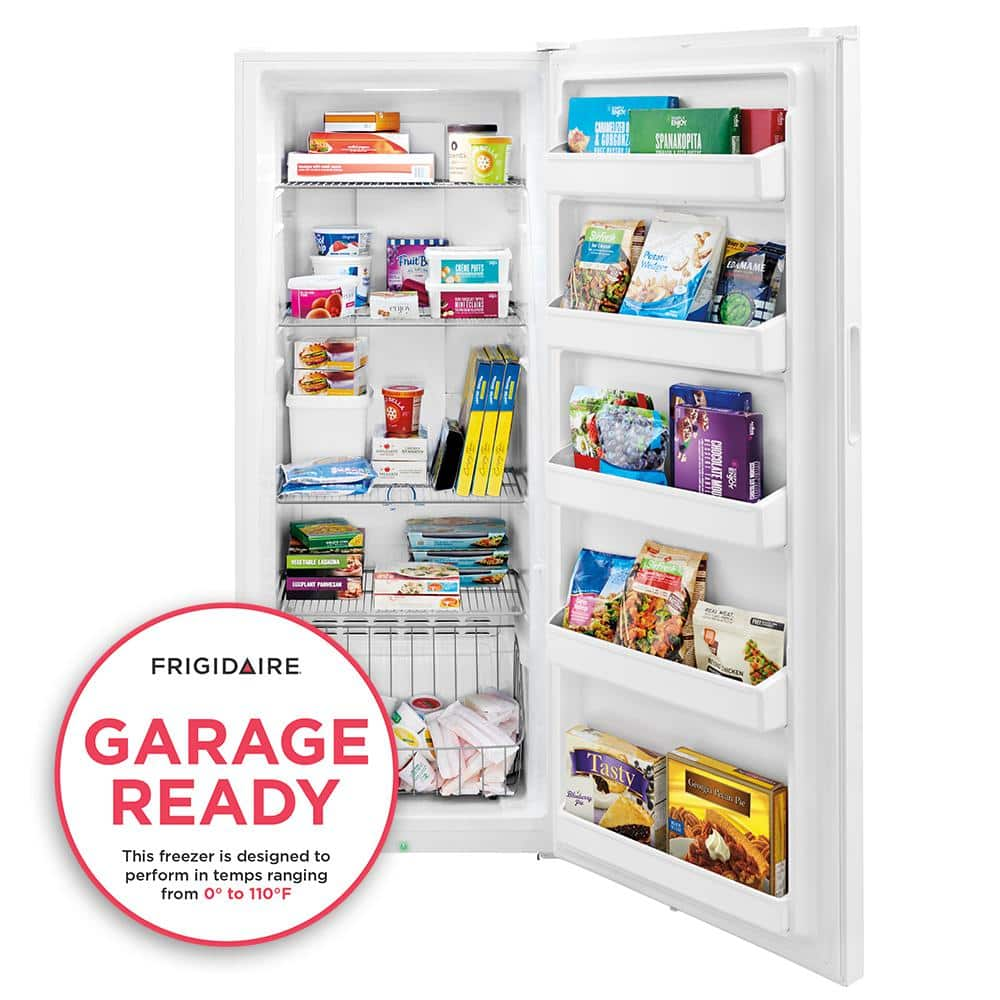Frigidaire 16 cu. ft. Frost Free Upright Freezer in Brushed Steel
Food stays frozen for two days with Power Outage Assurance. Prevent warm spots and unwanted freezing with EvenTemp Cooling. Frost Free Design.
The Frigidaire 16.0 cu. ft. Upright Freezer allows you to conveniently store all of your favorite frozen foods with a variety of ways to organize the interior. Ensure food freshness with a superior tight seal, floor-projected power-on indicator and door ajar alarm. Frigidaire’s EvenTemp Cooling System constantly circulates cold air throughout the freezer with smart sensing technology that adjusts airflow to maintain a uniform temperature, while bright LED lighting ensures you’ll spend less time digging through your freezer for items.
- Flexible interior organization system – Easily organize your family’s frozen favorites with our four adjustable, metallic wire shelves, deep bottom basket, and five spacious door bins that allow you to make the most of every available square inch of your freezer
- Frost-Free Design – Never waste time chipping away ice in your freezer again with our frost-free design that does the work for you
- Power Outage Assurance – Keep food frozen for two days if there is a power outage with our superior tight seal that locks in cold air
- EvenTemp Cooling System – Our EvenTemp cooling system constantly circulates cold air throughout the freezer with smart sensing technology that adjusts air flow to maintain a uniform temperature
- Door Ajar Alarm – Monitor the ideal environment for your frozen foods with our audible temperature alarm that alerts you if the door is left open or the freezer’s temperature rises
- Floor-Projected Power-On Indicator – Know at a glance that your freezer is keeping your favorites safely frozen and fresh with our power-on indicator light
- Internal dial temperature control makes controlling the temperature simple and easy
- Bright LED lighting makes it easy to see what’s inside
- Place this unit in your garage without worry. This unit is designed to perform in temperatures ranging from 0°F to 110°F
Additional information
| Depth (Excluding Handles) | 29.125 |
|---|---|
| Depth (Including Handles) | 29.125 |
| Depth With Door Open 90 Degrees (In) | 55.75 |
| Height to Top of Case (in.) | 67.75 |
| Height to Top of Door Hinge (in.) | 67.75 |
| Minimum Side Air Clearance (In) | 4 |
| Product Depth x Height x Width (in.) | 29.125 x 67.75 x 29.125 |
| Certifications and Listings | UL Listed |
| Warranty Information | One Year Limited |






by John
Haven’t had it long enough to give it excellent rating
by James
In the month or so that we have the freezer, it has worked very well. For the size of the appliance, a lot of food can be stored in it.
by Blessin
Nice upright freezer. Now to fill it.
by Marcha
Perfect size for an extra freezer. Just the right amount of shelves. A bit pricey but I guess that’s due to problems with the supply chain.
by James
Freezer is operating as expected and was delivered on time by polite and careful delivery team.
by Grey
Working well so far, it’s a nice size with lots of room for frozen goodies.